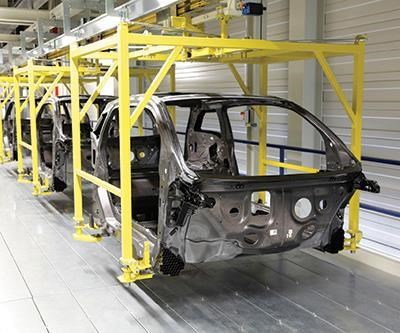Composites' future in automotive
The consensus is that carbon fiber will be a material of choice among many materials from which automotive OEMs will select, so the big question is not if carbon fiber will be used, but how much.

Future cars might not use as much carbon fiber as the BMW i3 does, but even a modest increase would represent a substantial fraction of total carbon fiber production.
One of the biggest topics of conversation last week at ÂÌñÏ×ÆÞ's Carbon Fiber conference in Scottsdale, Arizona, was about the future of carbon fiber in automotive applications. The consensus was that carbon fiber will be a material of choice among many materials from which automotive OEMs will select, so the big question is not if carbon fiber will be used, but how much.
And opinion varies widely. Chris Red, in his pre-conference seminar on carbon fiber supply and demand, painted a very positive picture of carbon fiber use in automotive, projecting total demand in that segment at 32,000 metric tons per year by 2025, up from an estimated 11,825 metric tons today.
Andreas Wüllner, managing director of SGL Automotive Carbon Fibers, and co-chair of the Carbon Fiber conference, at the end of the conference told attendees that he anticipates penetration of carbon fiber in automotive to reach about 2 kg per vehicle in 20% of all vechicles manufactured globally. Which might not sound like very much. However, the automotive industry is on pace to manufacture about 100 million vehicles per year by 2025. At 2 kg per car in 20% of that total, annual carbon fiber demand for automotive would be 42,000 metric tons.
Tom Pillette, from Magna Exteriors, suggested there could be a 2X increase in automotive carbon fiber demand by 2020, and a 3X increase by 2030. Assuming a conservative baseline today of about 10,000 metric tons, that puts his 2030 total at about 30,000 metric tons.
What does all of this mean? Any of these estimates, if they were to come to pass, would make the automotive industry among the largest consumers of carbon fiber in the world. And according to Red, it would be well ahead of aerospace structures, second only to wind turbine blades and pressure vessels.
The nice thing about forecasting is that everyone's right . . . until they're wrong. We'll see where the future takes us.
Related Content
-
“Structured air” TPS safeguards composite structures
Powered by an 85% air/15% pure polyimide aerogel, Blueshift’s novel material system protects structures during transient thermal events from -200°C to beyond 2400°C for rockets, battery boxes and more.
-
Braided thermoplastic composite H2 tanks with co-consolidated molded boss areas to fit EV battery space
BRYSON project demonstrates possible designs, automated manufacturing and low permeability concepts, including EVOH liner and novel PPA matrix.
-
McLaren develops aerospace-inspired ART method for volume composite super car engineering
Automated rapid tape (ART) technique, already deployed at the MCTC and to be used for future McLaren models, is capable of producing lighter, stiffer and stronger carbon fiber structures with less waste.






